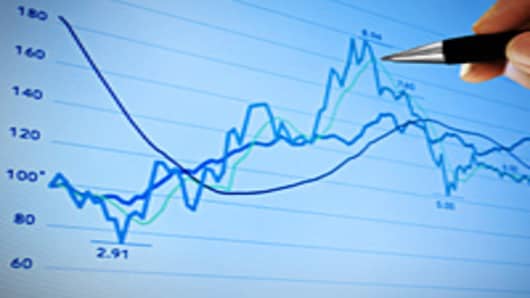Investors looking for Black Swans in the stock market may be able to find them in the latest offering from the Chicago Board Options Exchange.
On Feb. 23, the CBOE plans to roll out the S&P 500 Skew Index, an options gauge that already has earned the monikers of both the Black Swan Index and, a bit more derisively, the SIX.
At its heart, the SKEW (as the CBOE prefers) will measure out-of-the-money S&P 500 options to determine the risk of unanticipated, or Black Swan, events threatening the market. The Black Swan reference, of course, is from the Nassim N. Taleb book of the same name that, in part, delineates the importance of low-probability but catastrophic events in financial markets.
The SKEW will measure the implied volatility between puts and calls and derive a numeric value from the difference between the two.
Like the VIX, which measures volatility across the S&P 500 spectrum, the higher the SKEW number, the more the danger of what traders referred to as tail risk—or occurrences that occur farther out on the edges of the traditional bell curve.
Though it was hard to find a trader well enough acquainted with the new offering to provide much opinion, the CBOE’s well-traded volatility offerings have both fans and foes.
The VIX is often referred to as the market’s fear index. But while it ostensibly provides a 30-day window into market action, 30 minutes is more like it. Whether the SKEW is subject to the swings according to daily market whimsy remains to be seen.
Plus, there’s something oddly contradictory about an index that seeks to determine the probability of improbable events.
However, the thinking is that in the post-crisis environment more investors like to buy puts (downside protection) than calls (upside protection). A recent study by Societe Generale found that from a psychological standpoint, losses hurt a lot more than gains help. (Theo Casey, analyst at Futures & Options World, recently wrote eloquently on the SKEW proposal.)
So with the options activity as a barometer, the CBOE thinks the SKEW can provide an effective gauge outside the events measured by the VIX, which deals more with the likely than unlikely.
What happens, then, if the SKEW starts flashing red? Will investors start bailing and turning to cash?
Nobody seems to know for sure, but it seems like soon it will be investors’ open season on Black Swans.
___________________________________________
Questions? Comments? Email us at NetNet@cnbc.com
Follow Jeff @ twitter.com/JeffCoxCNBCcom
Follow NetNet on Twitter @ twitter.com/CNBCnetnet
Facebook us @ www.facebook.com/NetNetCNBC



